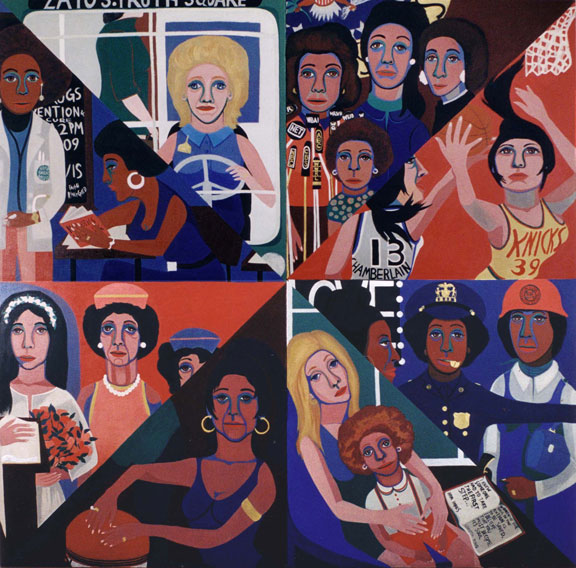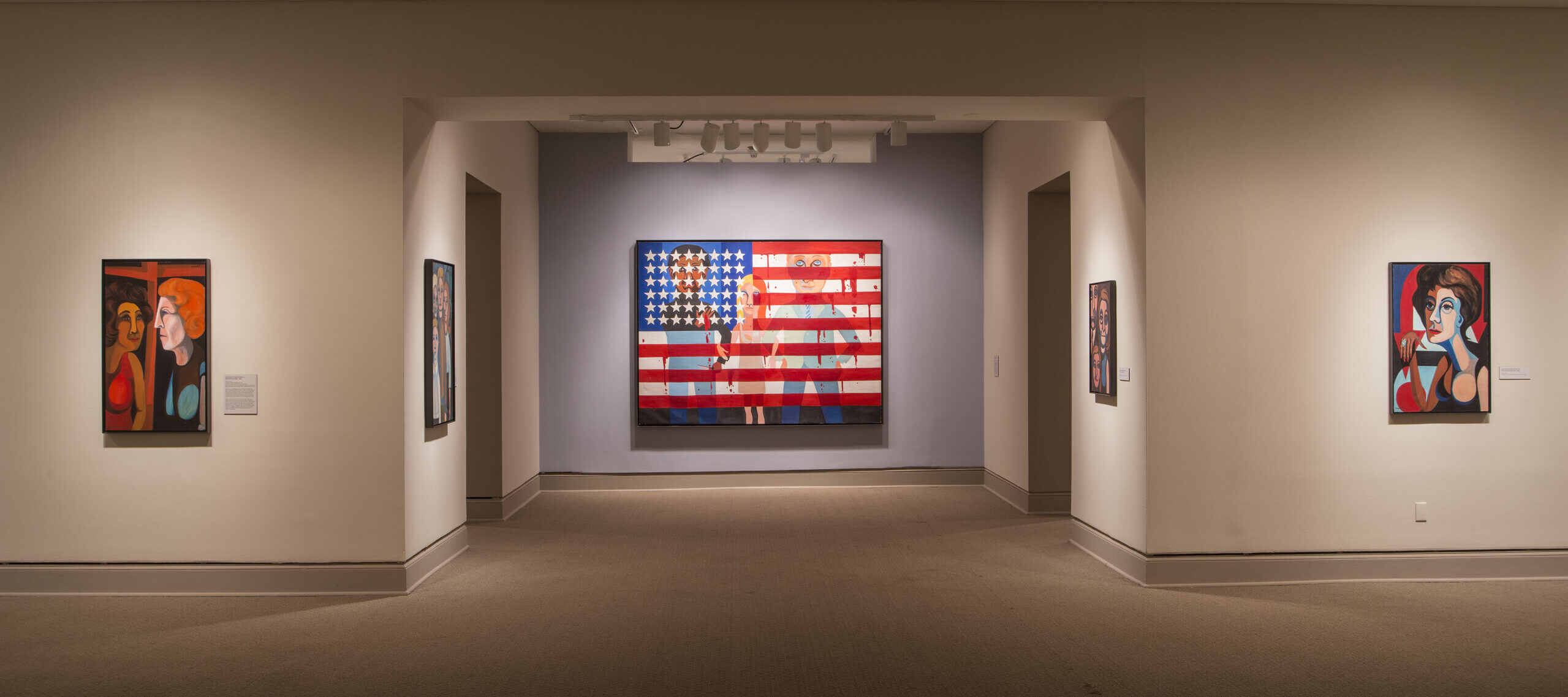The bleak walls of the Rikers Island Women’s prison may not be the most traditional venue to display art, but Faith Ringgold embraced the location and presented a mural to inspire the female inmates. In For the Women’s House, Ringgold echoed the feminist movement of the 1970s, painting eight different progressive scenes to encourage the women of the prison to imagine themselves moving on with their lives, traveling what an inmate called “the long road.”

Before beginning this feminist-themed piece, her first public commission, Faith Ringgold conducted extensive interviews with the female prisoners. She wanted the incarcerated women—mostly young mothers—to look beyond their situation and begin “the long road” ahead. Ringgold managed to capture the road toward not only rehabilitation but also to equality, which the women faced in the ’70s and which still exists for women today.
Ringgold prompted the inmates to imagine all possibilities for their futures. She depicted women of different ages and races in jobs scarcely occupied by women in 1972. The mural shows a society where all jobs could be readily available to women, regardless of age, race, or gender. In one quadrant of the mural, a white woman drives a public bus. Adjacent to that image, an African-American woman, a doctor, teaches her female student. In another quadrant, a police officer works alongside a construction worker, both young, African-American women. While it is more common to see women in those positions today, it was extremely rare at the time she painted it, and is still not totally commonplace.
Ringgold stated in an autobiographical essay that the work’s purpose was to “broaden women’s image of themselves by showing women in roles that have not traditionally been theirs…and to show women’s universality.”
Ringgold may have painted the mural to illustrate the end of “the long road” out of prison, but the mural also underscores the continued disparity that women face in many careers. The mural even looks further down the road, including a female African-American President speaking to a group of reporters. Although the present day may still need to catch up to Faith Ringgold’s inspirational vision, women continue to trek down the road leading toward equality.

